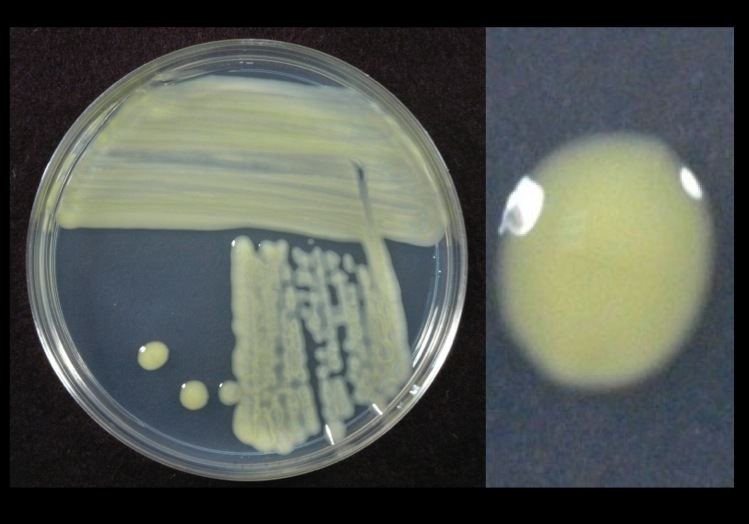Scientific name Xanthomonas Rank Genus | Family Xanthomonadaceae Phylum Proteobacteria | |
 | ||
Lower classifications Xanthomonas campestris, Xanthomonas citri, Xanthomonas arboricola, Xanthomonas albilineans, Xanthomonas populi | ||
Xanthomonas filmmusik karl mahler
Xanthomonas is a genus of Proteobacteria, many of which cause plant diseases.
Contents
- Xanthomonas filmmusik karl mahler
- V deo explicativo sobre bact ria xanthomonas
- Taxonomy
- Morphology and growth
- Xanthomonas plant pathogens
- Plant pathogenesis and disease control
- Industrial use
- References
V deo explicativo sobre bact ria xanthomonas
Taxonomy
The Xanthomonas genus has been subject of numerous taxonomic and phylogenetic studies and was first described as Bacterium vesicatorium as a pathogen of pepper and tomato in 1921. Dowson later reclassified the bacterium as Xanthomonas campestris and proposed the genus Xanthomonas.Xanthomonas was first described as a monotypic genus and further research resulted in the division into two groups, A and B. Later work using DNA:DNA hybridization has served as a framework for the general Xanthomonas species classification. Other tools, including multilocus sequence analysis and amplified fragment-length polymorphism, have been used for classification within clades. While previous research has illustrated the complexity of the Xanthomonas genus, recent research appears to have resulted in a clearer picture. More recently, genome-wide analysis of multiple Xanthomonas strains mostly supports the previous phylogenies.
Morphology and growth
Individual cell characteristics include:
Colony growth characteristics include:
Biochemical and physiological test results are:
Xanthomonas plant pathogens
Xanthomonas species can cause bacterial spots and blights of leaves, stems, and fruits on a wide variety of plant species. Pathogenic species show high degrees of specificity and some are split into multiple pathovars, a species designation based on host specificity.
Citrus canker, caused by Xanthomonas citri subsp. citri is an economically important disease of many citrus species (lime, orange, lemon, pamelo, etc.)
Bacterial leaf spot has caused significant crop losses over the years. Causes of this disease include Xanthomonas euvesicatoria and Xanthomonas perforans = [Xanthomonas axonopodis (syn. campestris) pv. vesicatoria], Xanthomonas vesicatoria, and Xanthomonas gardneri. In some areas where infection begins soon after transplanting, the total crop can be lost as a result of this disease.
Bacterial blight of rice, caused by Xanthomonas oryzae pv. oryzae, is a disease found worldwide and particularly destructive in the rice-producing regions in Asia.
Plant pathogenesis and disease control
Xanthomonas species can be easily spread in water, movement of infected material such as seed or propagation plants, and by mechanical means such as infected pruning tools. Upon contact with a susceptible host, bacteria enter through wounds or natural plant openings as a means to infect. They inject a number of effector proteins, including TAL effectors, into the plant by their secretion systems (i.e., type III secretion system).
To prevent infections, limiting the introduction of the bacteria is key. Some resistant cultivars of certain plant species are available as this may be the most economical means for controlling this disease. For chemical control, preventative applications are best to reduce the potential for bacterial development. Copper-containing products offer some protection along with field-grade antibiotics such as oxytetracycline, which is labeled for use on some food crops in the United States. Curative applications of chemical pesticides may slow or reduce the spread of the bacterium, but will not cure already diseased plants. It is important to consult chemical pesticide labels when attempting to control bacterial diseases, as different Xanthomonas species can have different responses to these applications. Over-reliance on chemical control methods can also result in the selection of resistant isolates, so these applications should be considered a last resort.
Industrial use
Xanthomonas species produce an extrapolysaccharide called xanthan gum that has a wide range of industrial uses, including foods, petroleum products, and cosmetics.
